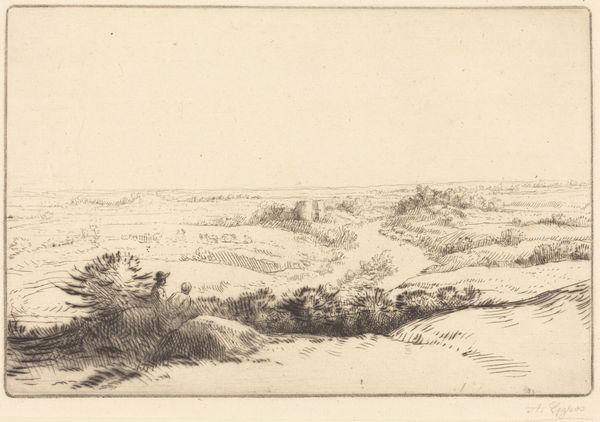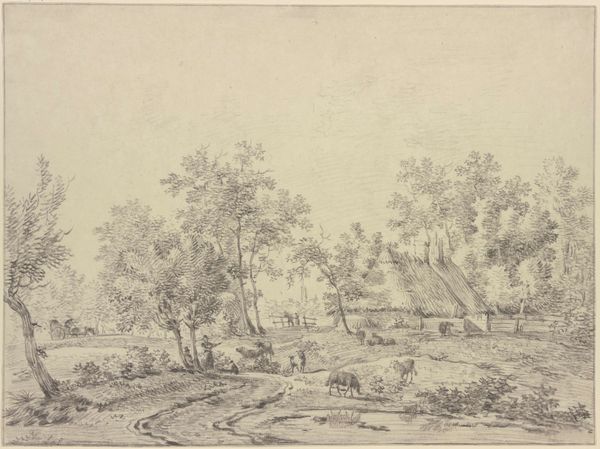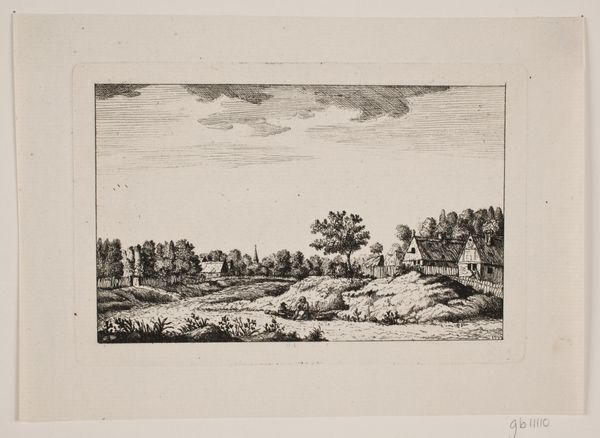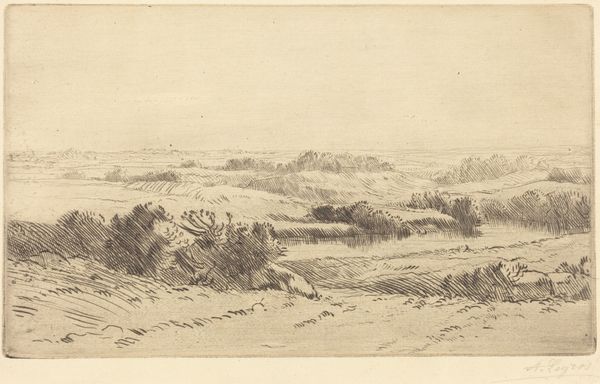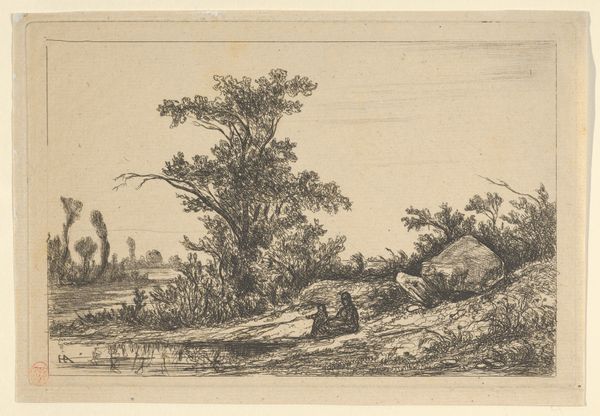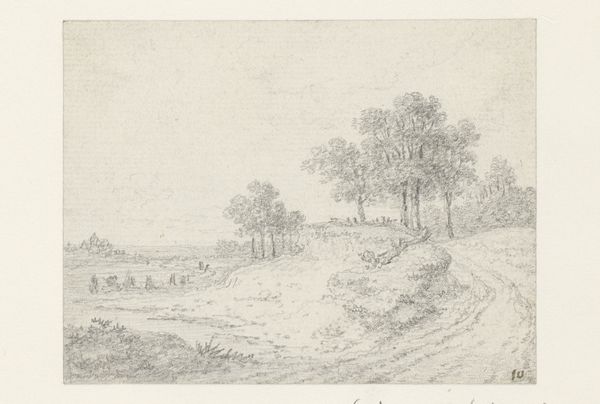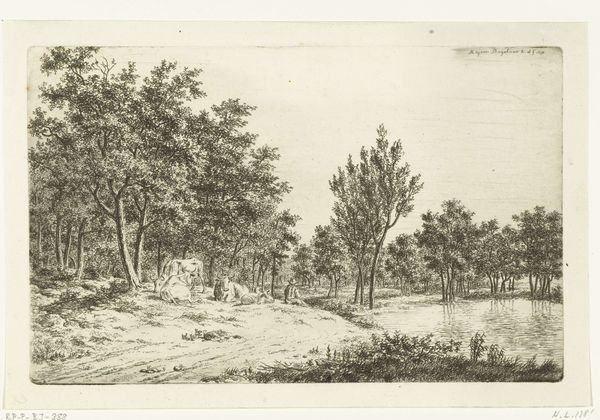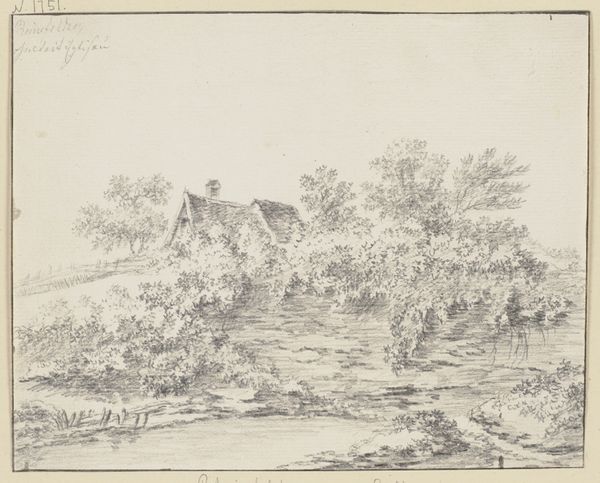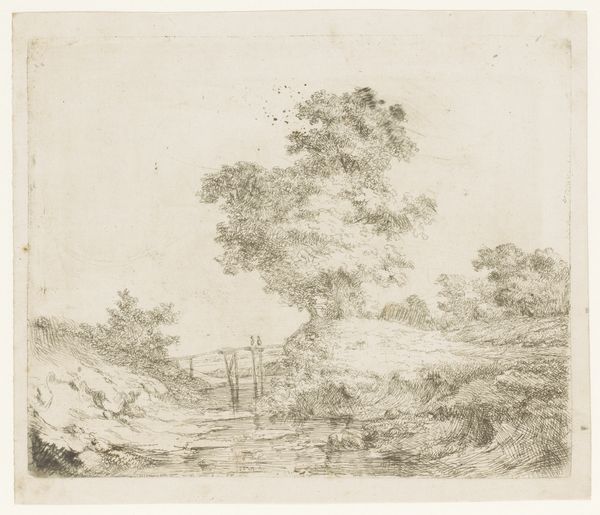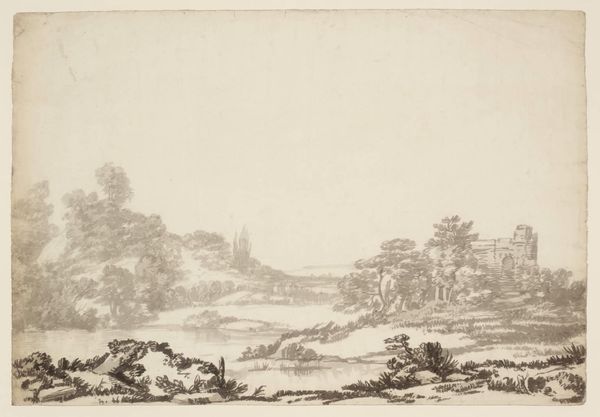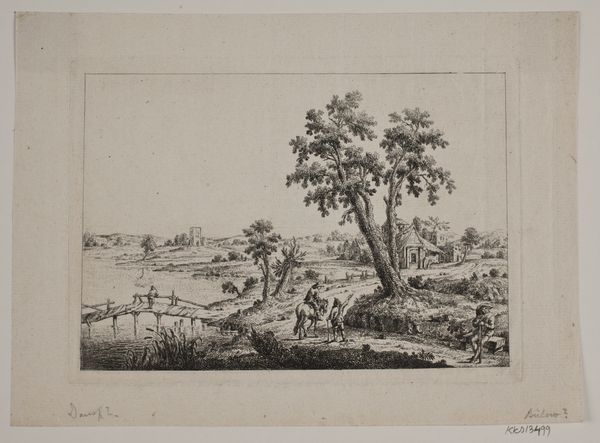
print, etching
# print
#
etching
#
landscape
#
etching
Dimensions: 98 mm (height) x 148 mm (width) (plademaal)
Curator: Let's examine this etching, "Landskab," created in 1776 by Johan Büllow, a striking example of the landscape tradition. What are your initial impressions? Editor: Austere. The scene has a sparseness—a lack of embellishment that emphasizes the humble architecture. The etching process itself seems integral to the message. Curator: Indeed, the artist masterfully uses the etching technique to create depth and texture. Notice the foreground details leading the eye to the cluster of cottages and then the church spire on the horizon. The composition has a clear tripartite structure. Editor: The labor involved in crafting the landscape itself is palpable. One can imagine the hand guiding the tools to create those deliberate lines on the plate. Did the populace living on the depicted lands see any profits from this piece's success? Curator: It is an evocation of nature. I would ask instead whether nature itself influenced him, or was the nature he depicted controlled through aesthetic and philosophical principles? Editor: Perhaps it speaks to the commodification of rural life through artistic representation, transforming working landscapes into picturesque scenery for consumption. Do we know where Büllow got the material to make this print? The metals and acids? Curator: Let's also recognize the formal sophistication. Consider how he creates depth solely through line variation, or the rhythmic interplay of light and shadow across the field and thatched roofs. It transcends mere representation. Editor: But by not representing the true labor involved in a rural setting—that is what strikes me most. Are the materials properly accounted for here, in terms of time, or money? Curator: Well, I see an engagement with timeless artistic values of balance and harmony; you're considering its engagement with more timely labor conditions. Fascinating. Editor: Exactly. Seeing the human toll of it all helps you interpret the picture! Curator: Indeed. It's a reminder of how we each bring our own perspectives to an artwork. Editor: And to its very existence, really.
Comments
No comments
Be the first to comment and join the conversation on the ultimate creative platform.
